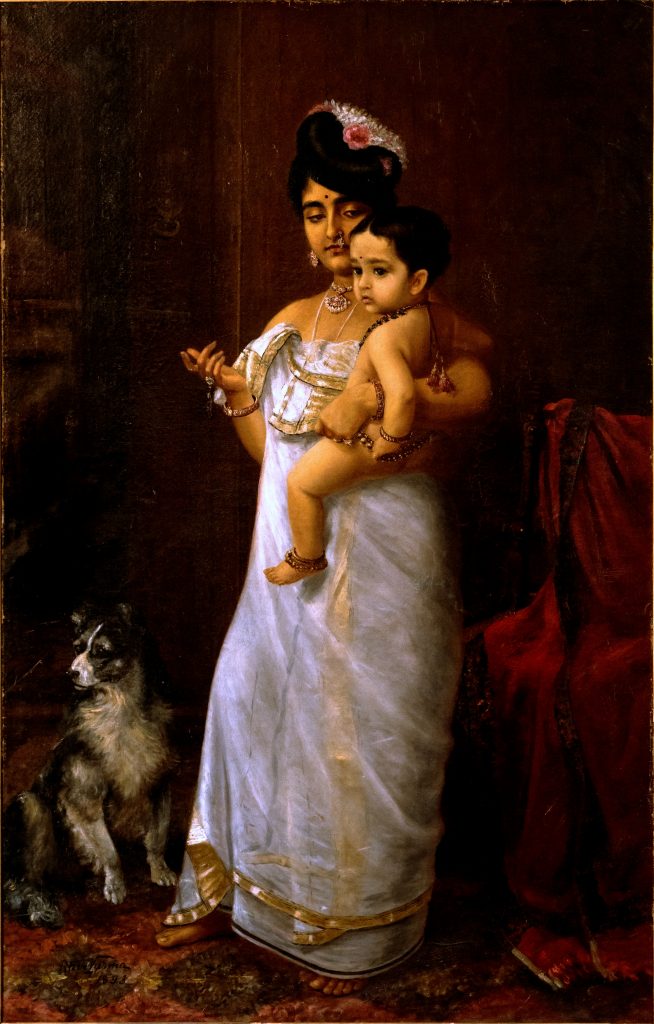Blogs
Why I Love Art: Discovering the Storyteller in Raja Ravi Varma
Athira Unni
Reflecting on the artist’s unique narrative quality and on the ways in which our lives intermingle with the art we appreciate and create.
The essence of all art is hope. There is no impression gathered from art that is greater than the simple hope of arrival, be it the arrival of joy in life, or the arrival of a loved one. My favourite painting, There Comes Papa (1893) by Raja Ravi Varma, depicts such a moment. It is more of a snapshot from a family life; a slice of a Travancore tale. Very few paintings in the classical mode allow aesthetics to intermingle with emotions. Even as this painting attempts to capture a moment, that moment is left open-ended. The painting depicts expectation and hope, a gentle ambiguous assurance. Perhaps that open-endedness is what makes it unique.
I first saw a replica of this painting on a school trip. It was a cheap print being sold on the roadside near a park and for some reason, it caught my eye. A Malabar lady in traditional clothes holding a child gesturing towards the arrival of someone with an excited dog at her feet. A simple domestic scene with much vitality. It is widely believed that the figures portrayed in the painting were Ravi Varma’s daughter and her son. Although I knew about Ravi Varma, I did not know he painted narrative scenes, as according to me, he only painted goddesses or ladies with fruits. As a young person, I did not read much into why I liked the painting and simply took home the replica to hang in my room.

There Comes Papa by Raja Ravi Varma, 1893, Oil on canvas, Kowdiar Palace, Thiruvananthapuram, Image credit: Wikimedia Commons
As the daughter of a Merchant Navy officer, my father was away a lot. Growing up, he would have to leave every few months. It would not be an overstatement to note that my sister and I consequently spent more time with our mother. Later, when I considered the circumstances of my life, I realised why the painting had made an indelible impression on me: I saw a reflection of my own life in it. The anticipation that I had experienced during my childhood, while waiting for my father to arrive, was captured in aesthetic strokes by Ravi Varma. I never thought that such instances of arrival and separation, with Welcome Home cards at the airport, or goodbye hugs at the gate, could even be captured in art. Perhaps, when I saw the painting as a young girl, something clicked into place. When it comes to art, it’s not always apparent why we appreciate it or connect with it. Probing into those reasons tells us more about ourselves than it does about the painting itself.
I eventually learnt that just as my taste for art was determined by circumstances, so was my writing. As a writer, the more I delved into my craft the more it became apparent that I was cherry-picking instances from my life, or the lives of people I knew, to write about. I was drawing on life to create art. To think that the reason why we love art is its interminable link with life is gratifying.
Athira Unni is a published poet, an English postgraduate and is currently pursuing doctoral research at Leeds Beckett University, UK. She is the Founder and Poetry Editor of Qissa.








